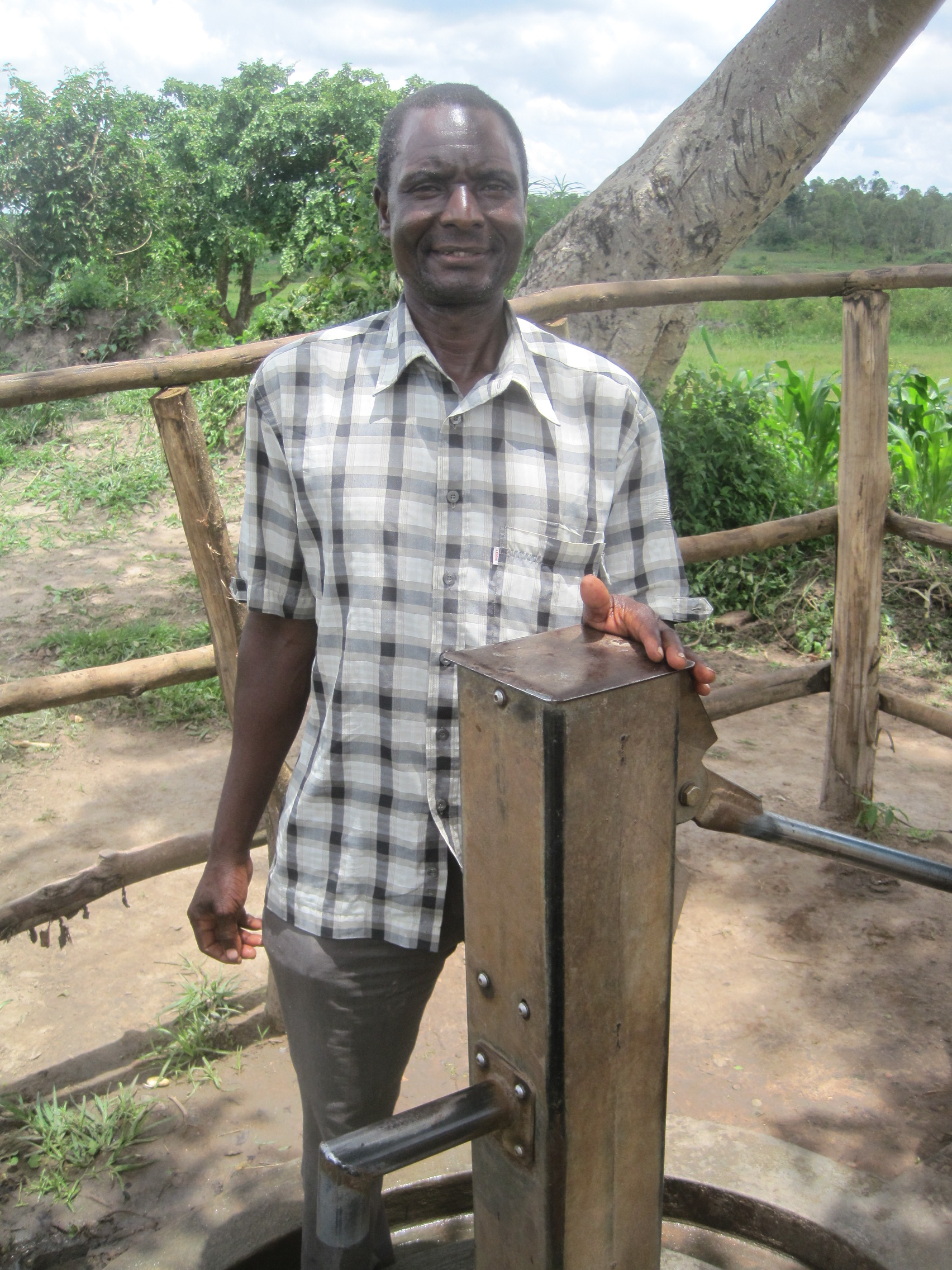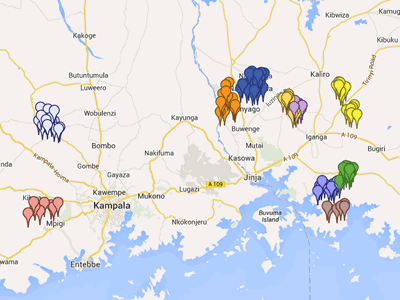Securing safe water and good hygiene practices through results-based-aid in Uganda
Securing safe water and good hygiene practices through results-based-aid in Uganda
Adam Harvey, director of Whave Solutions, explains the working of an innovative results-based model to incentivise the maintenance of safe water sources and high levels of household hygiene.
The CDKN-supported Safe Water pilot project in Uganda was designed as a demonstration of innovative Results-Based Finance and as an indication of how the Clean Development Mechanism could evolve. It has generated results for one year now. Whave has been disseminating the policy implications of the project in international fora and amongst key district and national government offices within Uganda. A preliminary policy paper is available at the Whave and Life Litres website.
[caption id="attachment_35328" align="alignleft" width="224"] Charles Kibumba, a WSP, maintains 12 pumps in working condition and expects his concession will grow to number 30 sources[/caption]
Charles Kibumba, a WSP, maintains 12 pumps in working condition and expects his concession will grow to number 30 sources[/caption]
Water-borne disease debilitates the communities of some 2 billion people worldwide and is exacerbated by climate change. The Whave Safe Water Security model is designed to provide a comprehensive solution to water-borne disease. It emerged from a period of careful research “on the ground”. The project identified four root causes for the prevalence of water-borne disease: (a) the lack of financial incentive for preventative maintenance of improved water sources and purification systems (b) the lack of continuity in hygiene intervention (c) the lack of continuity in governance support at community and local levels, and (d) limited confidence in community governance structures and a consequent reluctance amongst water users in rural communities, to pay for clean water.
The Safe Water project operates in over 100 communities (including schools within those communities) in the rural areas of six districts in eastern and central regions of Uganda where water-related health issues are persistent and significant due to high population density. Conventional hygiene lift campaigns have been augmented by an innovative payment-for- performance system that engages a cadre of local private sector “safe water service providers” (WSPs) in continuous hygiene promotion work. Hygiene levels are measured at the household level by randomised sampling each month. The data from the monthly surveys is used to reward the WSPs proportionately to the number of hygienic homes. An interesting lesson learned has been that the measurement process itself is a significant driver of increasing investment by households in construction of sanitation amenities and habituation to their regular use.
Performance payment of WSPs goes further than hygiene transformation; it also establishes a private sector structure for preventive maintenance. WSPs are paid according to the reliable daily operation of improved water sources and according to whether the water flowing from those sources meets the WHO low-risk standard in regular tests. As a result, the WSPs anticipate and prevent contamination before it happens, as well as anticipating and preventing breakdowns.
The project also introduces incentives for improved governance, by providing support to local organisational capacity and subsidising the costs of payments to WSPs for limited periods of time, which are extended subject to the performance ratings of water user committees. The long-term strategy of the project is to build a competent private sector paid according to its performance, while also increasing trust in the committees by water users such that willingness to pay the full costs of preventive maintenance grows progressively, phasing out the subsidies. This willingness to pay also increases as a result of growing familiarisation with reliable clean water, increasing awareness of educational disadvantages and the severe costs commonly met as a direct result of using high-risk water sources and poor hygiene.
[caption id="attachment_35331" align="alignleft" width="300"] The project operates in 100 communities in 5 districts of Uganda[/caption]
The project operates in 100 communities in 5 districts of Uganda[/caption]
The project works closely with local and central government, building a structure for lengthened life-cycles of water supply equipment and so improving return on government investment. The project has been welcomed at all levels of government on the basis of its focus on preventive maintenance, which is recognised as essential to cost-effective investment in rural water supply and health. It has however not yet been integrated into governance and public-private partnership systems in the rural water sector.
The project shows promise as a model for national scale-up and international replication, it is too early to be confident of its effectiveness. The purpose of the incentive payments to WSPs is to build an effective private sector service industry, and to generate continuous hygiene, governance, and reliability of supply improvement over several years. Finance is derived from the sale of “water credits” or “ WASH credits”, derived from measured water, sanitation, and hygiene outputs. Once the service and governance structures are robust, the results-based-finance has accomplished its transitional function of building user confidence, so leading to full payment by users.
An important output from this project on the international level has been the development of a detailed methodology for generating WASH credits based on extensive fieldwork. Whave is now publishing this methodology and assisting with its use in several WASH projects around the world, including those working specifically in schools
We occasionally invite bloggers from around the world to provide their experiences and views. The views expressed here are those of the author, and not necessarily those of CDKN.
For more information, visit the project page, or contact Adam Harvey, Director of Whave Solutions.
v\:* {behavior:url(#default#VML);}
o\:* {behavior:url(#default#VML);}
w\:* {behavior:url(#default#VML);}
.shape {behavior:url(#default#VML);}
